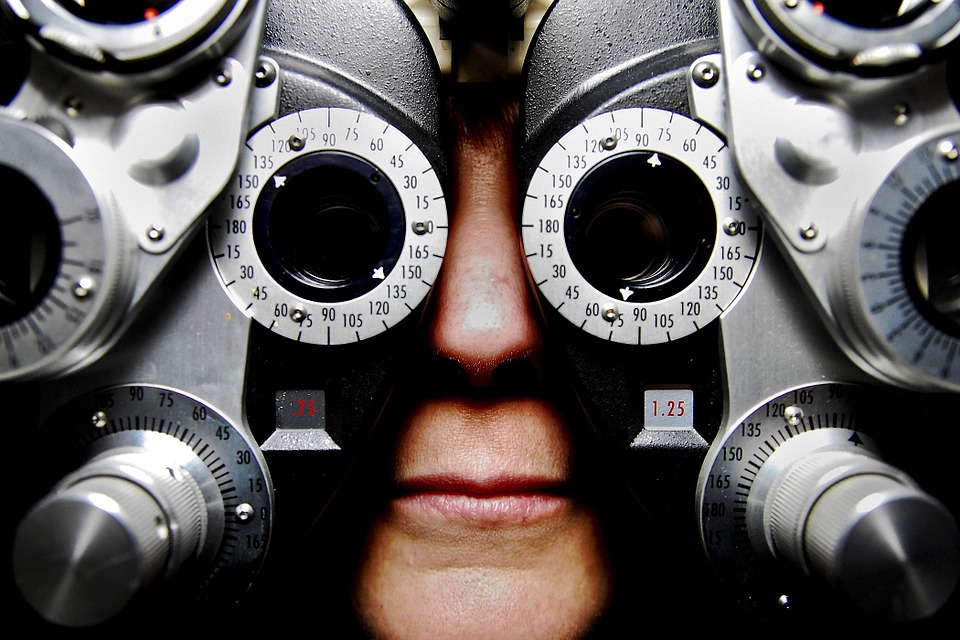
Ever notice strange shapes moving around in your eye? Are these shapes more prominent when you're looking at a bright blue sky or a white sheet of paper? These could be eye floaters - small pieces of collagen that are part of a gel in the back of your eye called the vitreous. So what makes these pieces of collagen move from the back to the front of the eye, and what can be done to remove or prevent this from happening? Here are answers to some common questions regarding causes, symptoms, and treatments for eye vitreous floaters.
What Causes Floaters?
Eye floaters occur when the vitreous gel in the eye starts to shrink and pull away from the back of the eye. As we age, this gel can become more liquid-like and clumps of collagen fibers can form, causing shadows or spots to appear in our vision. This process is also known as posterior vitreous detachment (PVD). PVD is very common and usually happens after the age of 50. It is not considered a serious condition, but it can cause temporary visual disturbances that may affect daily activities. PVD may also lead to retinal tears or detachments in some cases.
What Are The Symptoms?
Floaters can appear differently in every person who experiences them, but there are a few common symptoms that most patients experience. These symptoms include transparent spots or strings on the eyes, spots that move quickly when looking in different directions, spots that are noticeable when looking at bright lights or plain colors (like a bright blue sky), or spots that drift out of the line of vision.
If you are experiencing these symptoms, you should see a specialist as soon as possible to confirm that nothing major is developing in your eye, especially if more severe symptoms develop as well (i.e. new floaters appearing, an abundance of floaters, sudden flashes of light, or peripheral vision loss). These symptoms may be signs of a more serious condition, such as retinal detachment, which requires immediate medical attention to prevent permanent vision loss.
How Are Eye Floaters Treated?
While floaters can be annoying, most of the time, they are harmless and will go away on their own. However, if floaters are continuously getting worse, you will want to see your doctor about possible treatments. There are no treatments for floaters without risks, however. In the past, a vitrectomy, or a removal of the vitreous, was the best recommendation. However, this procedure has a risk of retinal tearing, retinal detachment, and cataract formation.
Lasertherapy is another treatment performed in a doctor's office. A laser is projected into the eye through the pupil to target and break up the large floaters. This procedure also carries the risk of retinal tear and detachment.
There is also a medication that can be injected into the eye, but this carries a risk of infection, retinal swelling, and retinal tear or detachment. These are all risks that you and your doctor can discuss if the need for treatment ever arises. Fortunately, the majority of floaters resolve naturally, with little to no hassle!
Tips to Prevent or Reduce Floaters
- Protect your eyes from injury by wearing protective eyewear when playing sports or working with dangerous equipment.
- Eat a healthy diet rich in antioxidants and omega-3 fatty acids to promote eye health.
- Stay hydrated - dehydration can cause the vitreous gel to shrink and increase the appearance of floaters.
- Limit your screen time and take breaks to reduce eye strain and fatigue.
- Avoid smoking, which can increase the risk of developing cataracts and other vision problems.
- Visit Everett and Hurite regularly for a dilated eye exam to detect any changes or issues with your eyesight early on.
Get Your Eyes Checked at Everett & Hurite
While eye floaters can be a nuisance, they are usually harmless and often resolve on their own. However, it is important to stay vigilant and aware of any changes in your vision that may indicate a more serious condition. By following the tips outlined above, you can help prevent or reduce the appearance of floaters and flashes and maintain good eye health for years to come.
Experiencing any symptoms of floaters? Concerned about your eye health? We can help! Everett and Hurite’s staff can assist you with questions about floaters, symptoms, treatments, and any other eye concerns you may have.Schedule an appointment by contacting us today!
Frequently Asked Questions
Why do light flashes happen?
Light flashes can occur for various reasons, such as pressure on the retina from tugging or rubbing of the vitreous gel. They can also occur when blood vessels in the eye shrink or spasm, causing a brief interruption in blood flow and resulting in light flashes.
What should I do if I experience a sudden onset of eye floaters?
A sudden increase in floaters, especially if accompanied by flashes of light, could indicate a serious condition like a retinal detachment. It's important to seek immediate medical attention to assess the situation accurately.
Can severe floaters lead to vision loss?
Most floaters are harmless and will eventually disappear on their own. However, if you experience a sudden increase in floaters or flashes of light, it could be a sign of a more serious condition that may require medical intervention to prevent permanent vision loss. It's best to consult with an eye specialist for proper diagnosis and treatment.
